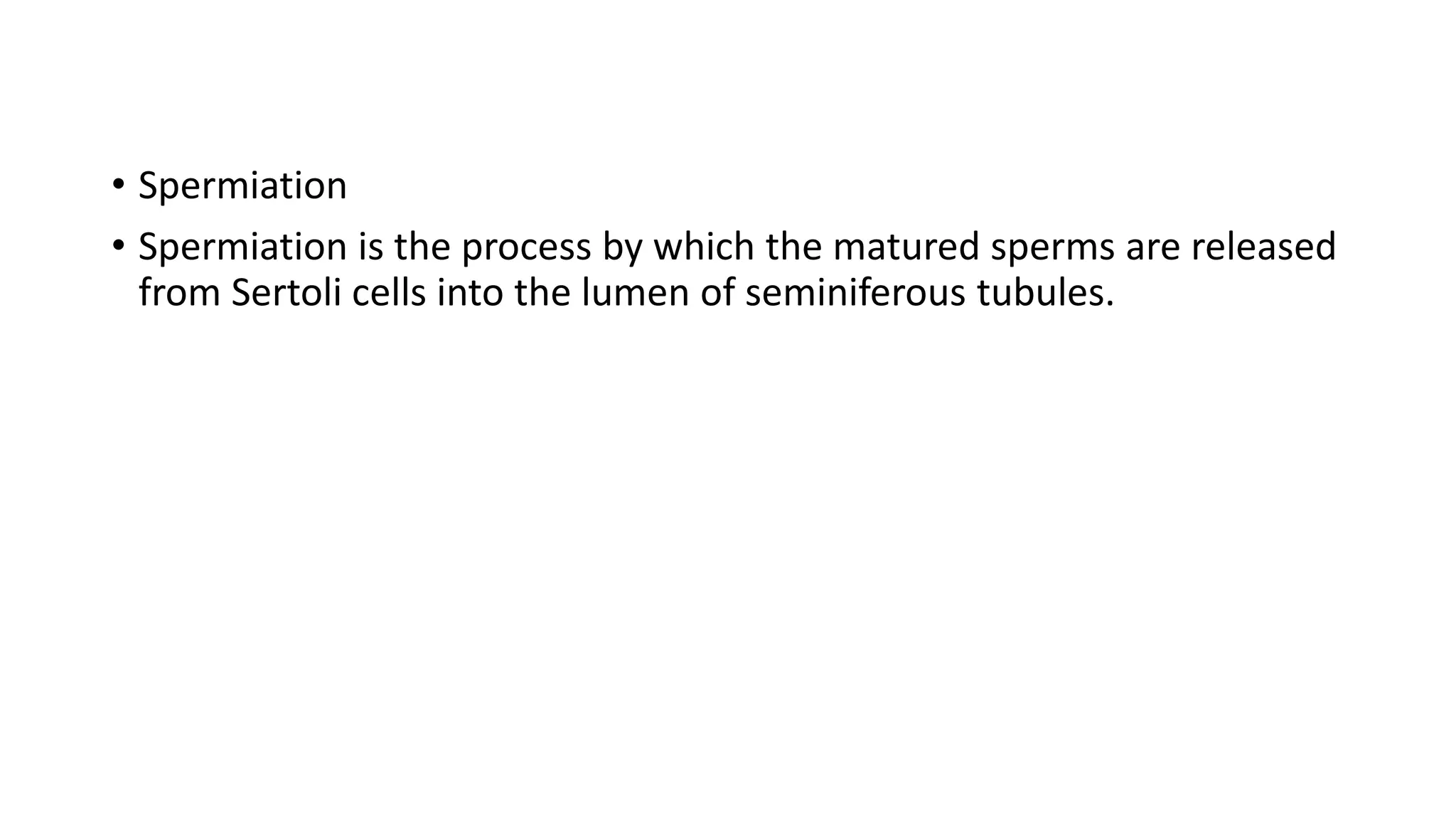The document discusses spermatogenesis, the process of sperm formation in the testes. It takes place in 4 stages: proliferation of spermatogonia, growth of primary spermatocytes, maturation through meiosis, and transformation of spermatids into mature sperm. Sertoli cells provide nutrients and support throughout spermatogenesis via cytoplasmic attachment to developing germ cells. The process takes approximately 74 days to complete.











































